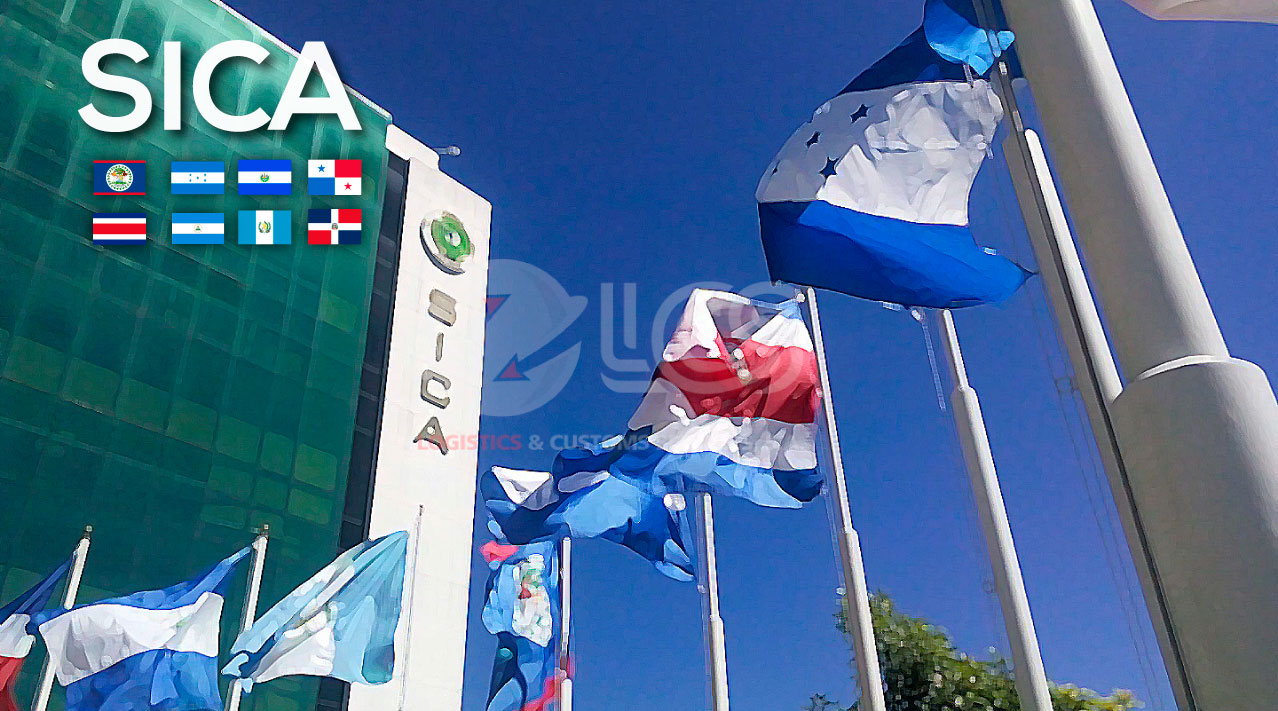Blog | Customs and Logistics
Panama's first customs and logistics blog
Panama's first customs and logistics blog

The System for Central American (SICA) has a fundamental goal, which is to achieve the integration of Central America with the purpose of obtaining mutual benefits in international trade and in economic matters. It currently counts with the states of Belize, Costa Rica, El Salvador, Guatemala, Honduras, Nicaragua, Panama and the Dominican Republic..
Although SICA was established in December 1991 and became operational in 1993, the ideas of integrating the area date back forty years before, when the current countries (with the exception of Belize and the Dominican Republic) launched the Organization of Central American States (OCAS). This Organization achieved significant progress and build the foundations for the economic, social and political integration of the Region.
Since 5 decades ago, in 1958, with the signing of the Treaty of Rome and the subsequent creation of the European Economic Community, countries around the world have been searching for the creation of economic blocs that allow them to increase their negotiating capacity and resource management: In Asia, ASEAN (Association of Southeast Asian Nations), in Africa, EAC (East African Community) and AU (African Uni in South America, Mercosur and CAN (Andean Community of Nations), among some of the examples that can be quoted.
However, the Central American countries, being small countries in terms of population and economies, still do not present an economic integration, knowing that the opportunities for negotiation at the global level are less if they are carried out independently.
For example, as a block, the Central American countries could negotiate better import prices for goods and services by drastically increasing the number of consumers. With the countries that currently make up SICA, the bloc would have some 50 million inhabitants. Equaling the population of Spain, and more than a third of the Mexican population. While separately, Guatemala (the country with the largest population in Central America) barely reaches 10% of the Aztec population. Regarding exports, the variety and quantity of products would be increased, which would improve the competitiveness of exporters in the area.
As a bloc we could also make better use of our resources. Agriculture, environment, tourism, are sectors from which we would benefit.
Héctor Sanabria identifies in his article “La Agricultura en Centróamerica”, in www.interpresas.net:
Agriculture represents a large proportion of the production and exports of the region (Central America), with an average of 18 and 39%, respectively, being one of the world regions in which agriculture has the highest percentage of participation in GDP of the respective countries, which is extremely high when compared to some first world countries.
The environment is also a topic from which benefits can be obtained. Central America has 8% of the planet's biodiversity. In comparison, the most developed countries, which in turn are the richest and most polluting on the planet, do not reach 1% among all. As a bloc it is possible to negotiate compensation for the damage they cause to the global environment. Which in turn can be used to further develop eco-tourism.
As for Panama, we have a lot to contribute. Panama's economy is one of the most stable within America, and we have sectors and assets that are not easy to emulate by any of the other participating nations, such as financial and logistics services. This is how the Nuevo Diario de Nicaragua Journal comments in its article “Panama in the Central American Common Market”:
With the incorporation of Panama to the Central American Common Market, a possibility of strengthening regional integration has been opened, given the capacity and weight of this country as a hub for transportation, communications, banking and finance services, thanks to the operation of the Panama Canal.
Given this progress, the rest of the Central American region has to analyze and plan how to best take advantage of Panama's strength as a new member of the Central American Integration System (SICA), to increase the weight and commercial and economic significance of this region. The Panama Canal and transisthmian railway should be viewed as investments and assets of the Central American region itself.
And that is the right way to analyze the assets that each country has in order to contribute to the integration. Thus, for example, the resources that Nicaragua tried to seek for the financing of a second trans-isthmus canal would be more feasible to obtain if they were directed to developing a rail corridor that will connect Panama with Mexico, promoting Panama not only as an Interoceanic Canal, but also as the direct gateway for products traveling from all of South America to North America; and this in turn would have an impact on all the countries of the bloc.
Although from a positive perspective there are many advantages to forming a Central American economic bloc, there are also many challenges to overcome in order to achieve full integration and much more if we analyze it from the perspective of the fundamental objectives for achieving integration. Such a fundamental objective, as detailed by SICA, is to constitute the Central American region in a region of Peace, Freedom, Democracy and Development.
Peace Region. The Central American region is one of the most violent in the world. In the 2016 crime index, 3 Central American countries (Guatemala, Honduras and El Salvador) appeared within the first 10 countries worldwide classified as extreme risk.
Freedom and Democracy Region. All Central American countries, without exception, have had a dictatorial government at some point during their "republican" history, and although the Magna Carta of several countries in the region prohibits presidential reelection, we can see how in each election period the rulers try to remain in power, showing that political leaders still hold dictatorial views of government command. Such is the current case in Nicaragua, which has generated a series of protests and armed conflicts between the civilian population and the security forces..
Development Region. There can be no social development when there are high levels of corruption, and in this matter Central American countries have a long way to go. It is only a matter of reviewing the 2017 Corruption Perceptions Index where Costa Rica, our best exponent, only reached 59 points, not to mention Panama with just 37. And these indicators, which are not very positive, are also reflected in the Gini index, used to measure income inequality; where at the time of writing this article, the most discouraging index in the region is Panama, just below Honduras. .
The integration of the Central American countries presents opportunities for Panama in terms of foreign trade. Uniting Panamanian producers with others in the region could allow a better outlet for Isthmian products by reducing the difficulty of meeting quantities. In addition, it would place the country in the position of not only having the ports for export from Panama, but from all of Central America. The same situation and leverage would occur in terms of imports. The ports will not only receive the imported merchandise to Panama, but also the merchandise destined for Central America, together with a reduction in the costs of the merchandise when adding our demands.
With greater capacity to seek investment, multimodal connections and a rail network could be achieved throughout the region, which would position Panama not only as the merchandise link between the oceans, but also between the Americas.
However, the same old questions still remain: Will all this potential for economic development allow the desire for social development and equity in the distribution of wealth, or will our historical indicators continue to play against us? Having this in mind, the truth is that in a globalized world you cannot be an individual player.




We are a customs agency that offers personalized services for the management of imports, exports and procedures with institutions, derived from the development of international trade.
We have a highly qualified staff for handling all types of customs procedures, trained to provide convenient and effective solutions in each of our clients´ operations.
Contacte a su corredor de aduana en Panamá
Ave. Ricardo J Alfaro, Edificio Century Tower, Piso 9, Oficina 918.
261-6530 / 261-6104